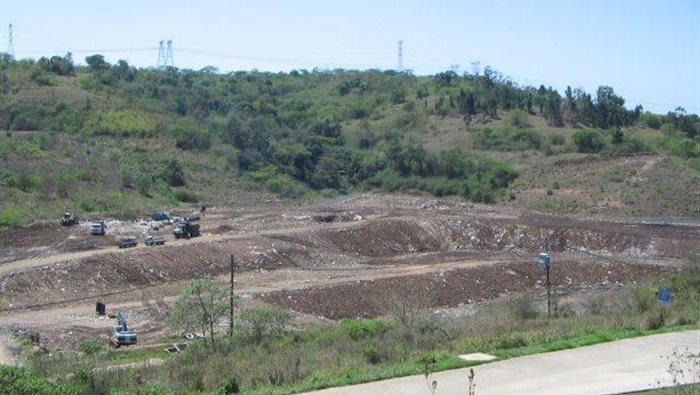
Related
Top stories


Marketing & MediaFormer FNB CEO Michael Jordaan backs Adbot to build tools that multiply marketing capacity
AdBot 1 hour




More news












South Africa’s eight Category ‘A’ metropolitan municipalities have the highest population numbers and therefore generate the largest waste volumes at about 20 million and 10 million tons of waste a year respectively, of which the bulk is landfilled.
Landfilling at an average density of 1 t/m3 means that municipalities need an annual landfill space of about 10 million m3.
With landfill space at such a premium, the controlled, planned and systematic filling of landfill cells requires progressive closure and rehabilitation. The recent fire at the New England Road landfill in Pietermaritzburg, KwaZulu-Natal has raised awareness about the myriad issues facing the proper management of such sites throughout South Africa.
In terms of landfill assessments, companies such as Aecom use an integrated approach to assist its clients throughout the landfill lifecycle, from site identification and landfill design through to rehabilitation and closure planning.
Landfills may need to be closed for various reasons, including unacceptable environmental impacts such as groundwater pollution, and/or unmanageable air pollution such as dust or odours. Geological issues include dolomitic ground conditions which can result in water ingress and sinkhole formation.
In many instances, improving landfill management and operations is a necessary first step, but if this proves unsuccessful, closure becomes necessary. The process of landfill closure and remediation is legislated by the National Environmental Management Waste Act (Nemwa), the Water Act and the Waste Management Series.
This should be maintained throughout the operational phase, after which capping is carried out by means of an engineered liner. Furthermore, all stormwater run-off must be diverted away from the waste body so as to separate the clean and dirty water circuits, and to prevent leachate soaking into the waste body, which can result in subsequent groundwater pollution and odours.
The site must also be fully secured and access-controlled to prevent trespassers. For example, there could be an issue with people remining the waste body for recyclables which presents a fire risk as well as allowing rainwater to permeate the waste body.
Following closure and remediation, the landfill site is subject to a recommended post-closure monitoring period of up to 30 years. This is to monitor the integrity of the capping and the impact of the groundwater quality in and around the waste body.
There may also be a need for ongoing pumping and treatment of the leachate that gathers in the leachate collection system. The landfill will also most likely require a methane management system, whether by landfill gas harvesting or regular flaring, so as to prevent methane build-up, fire risk and air pollution.